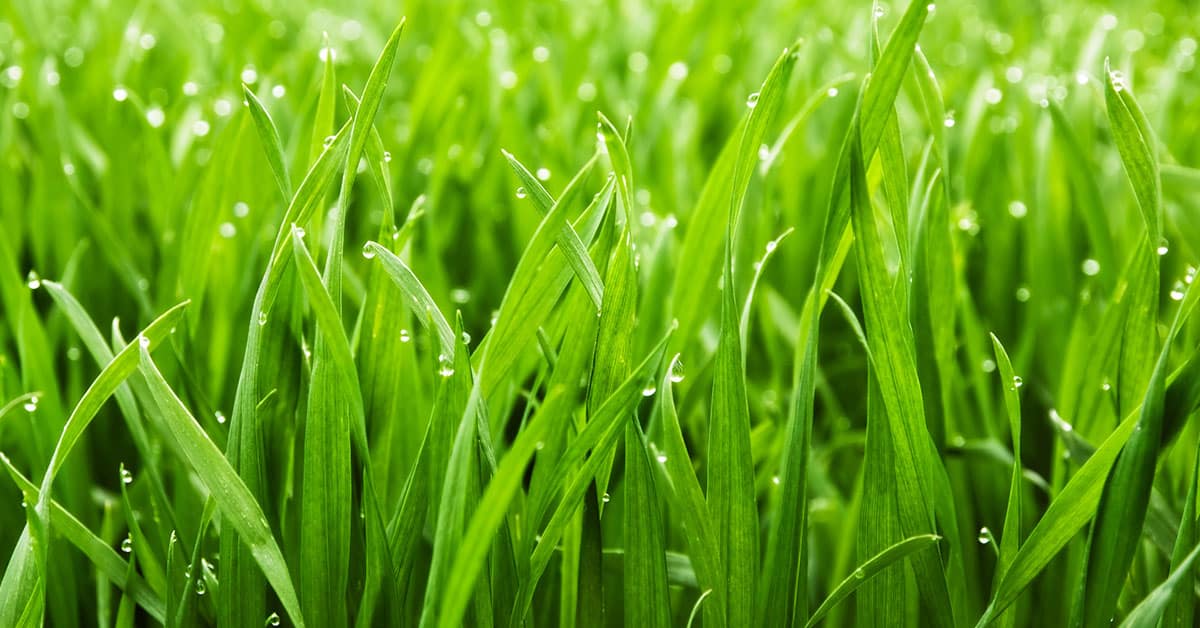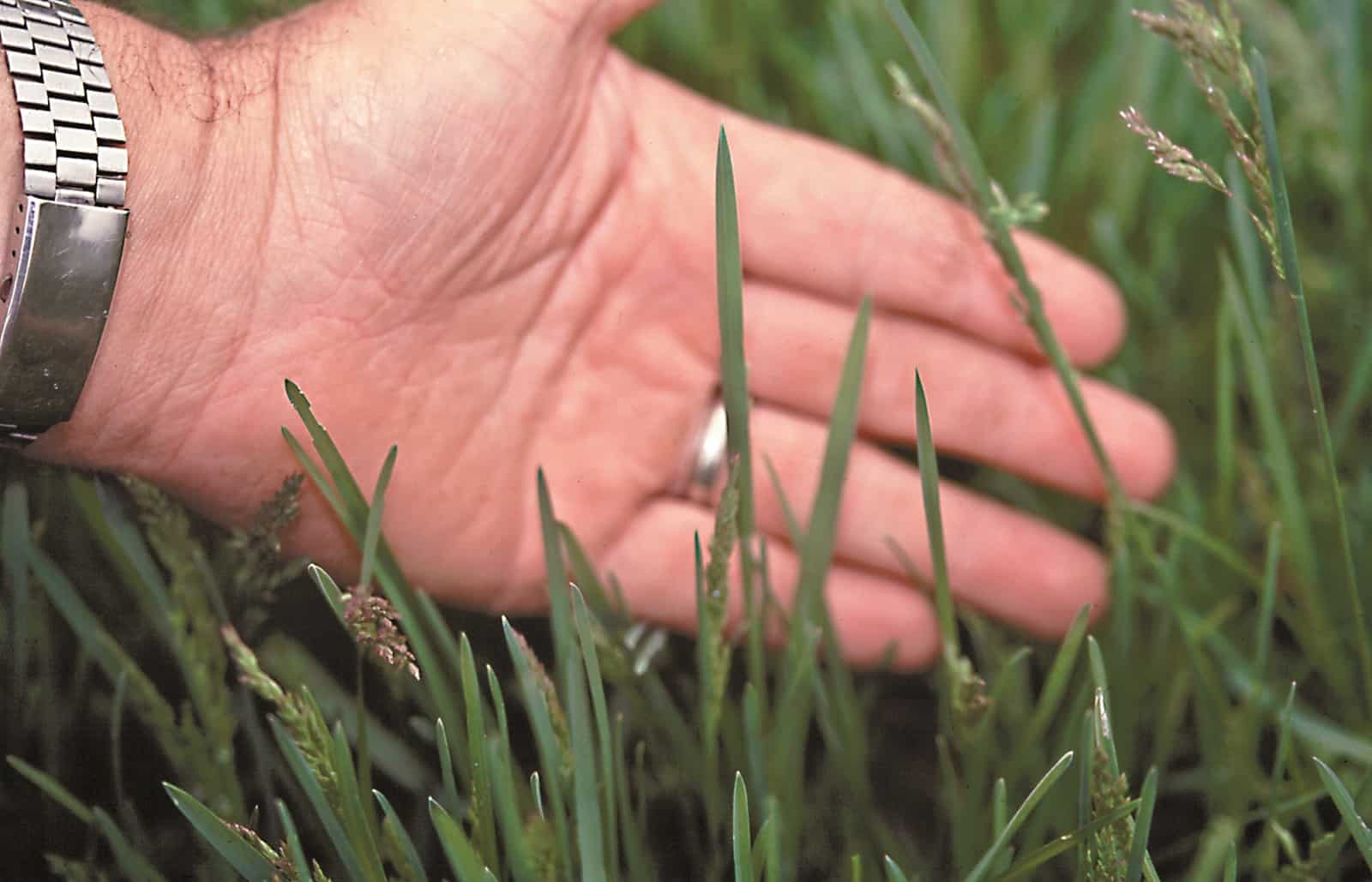Home>Gardening & Outdoor>Landscaping Ideas>What Does Johnson Grass Look Like


Landscaping Ideas
What Does Johnson Grass Look Like
Modified: February 18, 2024
Discover what Johnson grass looks like and how to identify it in your landscaping. Get landscaping ideas and tips for managing Johnson grass.
(Many of the links in this article redirect to a specific reviewed product. Your purchase of these products through affiliate links helps to generate commission for Storables.com, at no extra cost. Learn more)
Introduction
Read more: What Does Alfalfa Grass Look Like
Introduction
When it comes to landscaping, the presence of invasive plant species can pose significant challenges. One such species that frequently garners attention is Johnson grass. Understanding the physical characteristics, geographic distribution, ecological impact, and effective control and management strategies for Johnson grass is crucial for maintaining the health and aesthetic appeal of landscapes. In this article, we will delve into the various aspects of Johnson grass, shedding light on its appearance, habitat, and the measures necessary to mitigate its impact.
Key Takeaways:
- Johnson grass is a tough, invasive plant with long, narrow leaves and dense seeds. It can outcompete native plants and disrupt ecosystems, so it’s important to control and manage it effectively.
- To tackle Johnson grass, we need a mix of strategies like cutting, using herbicides, and promoting diverse plant communities. Early detection and teamwork are crucial for keeping landscapes healthy and biodiverse.
Physical Characteristics of Johnson Grass
Johnson grass, scientifically known as Sorghum halepense, is a perennial grass that belongs to the Poaceae family. This invasive species is characterized by its robust nature, capable of reaching impressive heights of up to 2.5 meters. The plant features coarse, erect stems that are marked by prominent nodes and stout rhizomes, which contribute to its vigorous growth and ability to spread rapidly.
The leaves of Johnson grass are long, narrow, and possess a distinct midrib. They are arranged alternately along the stem, imparting a distinctive appearance to the plant. The leaf blades are typically around 2-4 centimeters wide and can vary in color from light green to purplish hues, depending on environmental conditions and maturity.
One of the most recognizable features of Johnson grass is its inflorescence, which comprises dense, compact panicles that emerge from the tips of the stems. These panicles are composed of numerous spikelets, each housing the plant’s seeds. The seeds are small and oval-shaped, contributing to the plant’s reproductive capacity and potential for colonization in various habitats.
Furthermore, Johnson grass exhibits a robust root system, with extensive rhizomes that enable it to establish a firm foothold in diverse soil types. This aggressive root network not only facilitates the plant’s ability to thrive in challenging conditions but also presents a formidable challenge when attempting to eradicate it from landscapes.
Geographic Distribution
Johnson grass, native to the Mediterranean region, has managed to extend its reach far beyond its original habitat, establishing a global presence in numerous countries. This invasive species has demonstrated remarkable adaptability to varying climates and soil conditions, enabling it to thrive in diverse environments. Its widespread distribution can be attributed to human activities, such as the unintentional introduction of seeds through contaminated agricultural produce, as well as deliberate cultivation for forage and erosion control.
In the United States, Johnson grass has firmly entrenched itself in the southern states, where the warm, humid climate provides an ideal setting for its proliferation. However, its tenacity is not limited to the southern regions, as it has been documented in states extending as far north as New York and as far west as California. The ability of Johnson grass to flourish in both agricultural and non-agricultural landscapes underscores the urgency of addressing its impact on ecosystems and agricultural productivity.
Internationally, Johnson grass has made its mark in countries across Europe, Asia, Africa, and Australia, where it has been classified as a noxious weed due to its detrimental effects on native flora and agricultural operations. Its adaptability to a wide range of environmental conditions has rendered it a formidable adversary, necessitating concerted efforts to curtail its spread and mitigate its ecological and economic repercussions.
The pervasive nature of Johnson grass serves as a reminder of the critical importance of implementing measures to prevent its introduction and to contain its expansion in regions where it has already gained a foothold. By understanding its geographic distribution and the factors contributing to its spread, stakeholders can develop targeted strategies to mitigate its impact and safeguard vulnerable ecosystems from its encroachment.
Ecological Impact
The presence of Johnson grass can have profound ecological implications, exerting far-reaching effects on native plant communities, wildlife habitats, and ecosystem dynamics. As an aggressive and competitive species, Johnson grass possesses the capacity to outcompete native vegetation, leading to the displacement of indigenous plant species and the alteration of ecological processes.
One of the primary ecological concerns associated with Johnson grass is its ability to form dense, monotypic stands, effectively monopolizing available resources such as water, nutrients, and sunlight. This monopolization can impede the growth and establishment of native flora, disrupting the delicate balance of biodiversity and diminishing the overall resilience of ecosystems.
Furthermore, the prolific nature of Johnson grass, coupled with its robust root system, can contribute to soil erosion and the degradation of natural habitats. The formation of dense rhizomatous networks not only stabilizes the plant’s foothold in the soil but also impedes the germination and growth of other plant species, exacerbating the ecological repercussions of its presence.
In addition to its impact on plant communities, Johnson grass can also influence wildlife habitats and foraging patterns. The formation of dense monocultures may limit the availability of suitable foraging grounds for herbivores, potentially altering the composition and distribution of wildlife populations. Moreover, the allelopathic properties exhibited by Johnson grass, where it releases chemicals that inhibit the growth of other plants, can further disrupt the delicate interplay between flora and fauna in natural ecosystems.
Given its propensity for rapid spread and colonization, Johnson grass poses a significant challenge in both natural and managed landscapes, necessitating proactive measures to mitigate its ecological impact. By recognizing the far-reaching consequences of its presence, stakeholders can implement targeted management strategies to preserve biodiversity, restore native habitats, and safeguard the ecological integrity of diverse ecosystems.
Johnson grass is a tall, coarse grass with wide leaves and a purplish seed head. It can grow up to 8 feet tall and has a thick, white underground stem. Be cautious as it’s an invasive weed.
Read more: What Does Grass Hay Look Like
Control and Management of Johnson Grass
Effectively addressing the presence of Johnson grass requires a multifaceted approach that integrates various control and management strategies tailored to specific landscapes and environmental contexts. Given its tenacious nature and rapid spread, proactive measures are essential to curtail its impact and prevent further proliferation.
One of the primary strategies for managing Johnson grass involves the implementation of mechanical control methods. This may include mowing or cutting the plants to prevent seed production and limit their vigor. However, it is important to note that mechanical control alone may not be sufficient, as Johnson grass possesses resilient rhizomes that can regenerate new growth even after being cut back.
Chemical control methods, such as the application of herbicides, are often employed to target Johnson grass infestations. Selective herbicides that specifically target grassy weeds while minimizing harm to desirable vegetation can be utilized to effectively manage its spread. However, careful consideration must be given to the potential impact of herbicides on non-target species and the surrounding ecosystem.
Integrated weed management approaches, which combine mechanical, chemical, and cultural methods, offer a comprehensive strategy for mitigating the impact of Johnson grass. This may involve promoting competitive vegetation to suppress the growth of Johnson grass, enhancing soil health and fertility to favor the establishment of desirable plants, and implementing targeted herbicide applications to manage infestations in a sustainable manner.
Cultural practices, such as promoting proper land management techniques and fostering healthy, diverse plant communities, can contribute to the long-term suppression of Johnson grass. By creating conditions that are conducive to the growth of desirable vegetation, land managers can reduce the opportunities for Johnson grass to establish and proliferate.
Furthermore, early detection and rapid response are critical components of effective Johnson grass management. Timely identification of infestations and prompt implementation of control measures can prevent the escalation of the problem and minimize the resources required for mitigation.
Ultimately, successful control and management of Johnson grass hinge on a coordinated and adaptive approach that accounts for the unique characteristics of individual landscapes and ecosystems. By integrating diverse control methods and leveraging a nuanced understanding of the plant’s biology and behavior, stakeholders can work towards mitigating its impact and fostering resilient, biodiverse landscapes.
Conclusion
Johnson grass, with its robust growth, extensive rhizomatous network, and prolific seed production, poses a formidable challenge in diverse landscapes, necessitating a comprehensive understanding of its characteristics and the implementation of targeted management strategies. Its invasive nature and ecological impact underscore the urgency of addressing its presence and mitigating its spread to preserve the integrity of natural ecosystems and managed landscapes.
By familiarizing ourselves with the physical characteristics of Johnson grass, recognizing its geographic distribution, understanding its ecological implications, and implementing effective control and management measures, we can work towards minimizing its impact and fostering resilient, biodiverse environments. Proactive measures, such as integrated weed management approaches and cultural practices that promote the establishment of desirable vegetation, are essential components of a holistic strategy to mitigate the encroachment of Johnson grass and restore ecological balance.
Furthermore, collaboration among land managers, conservationists, and community stakeholders is paramount in addressing the challenges posed by Johnson grass. By sharing knowledge, resources, and best practices, we can collectively work towards containing its spread and preserving the ecological integrity of diverse landscapes.
In conclusion, the management of Johnson grass necessitates a multifaceted approach that integrates diverse control methods, emphasizes early detection and rapid response, and underscores the importance of fostering healthy, biodiverse ecosystems. By recognizing the ecological implications of invasive species and implementing proactive measures to address their presence, we can strive towards the preservation of natural habitats, the restoration of native plant communities, and the cultivation of resilient, thriving landscapes.
Frequently Asked Questions about What Does Johnson Grass Look Like
Was this page helpful?
At Storables.com, we guarantee accurate and reliable information. Our content, validated by Expert Board Contributors, is crafted following stringent Editorial Policies. We're committed to providing you with well-researched, expert-backed insights for all your informational needs.















0 thoughts on “What Does Johnson Grass Look Like”